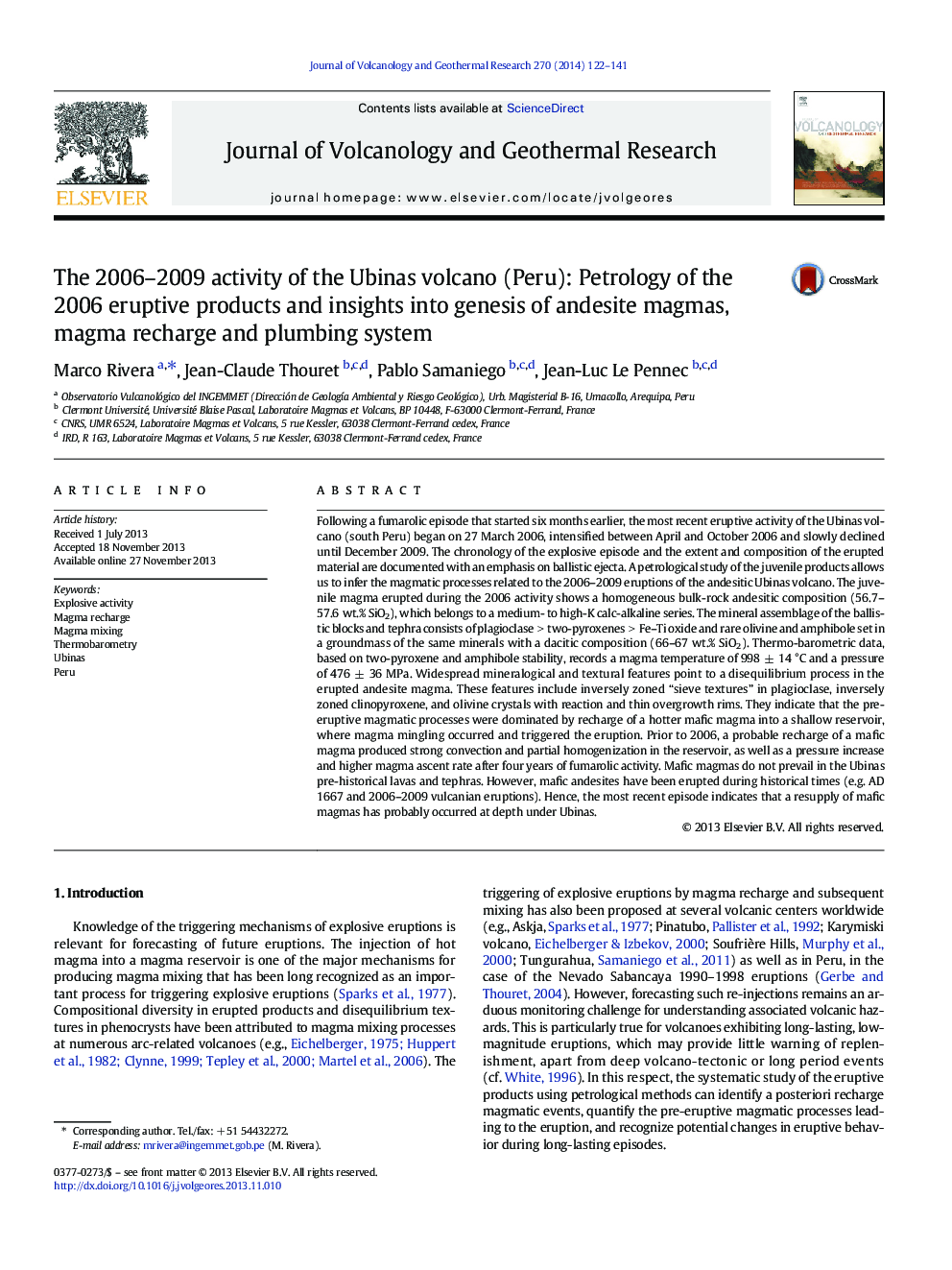| کد مقاله | کد نشریه | سال انتشار | مقاله انگلیسی | نسخه تمام متن |
|---|---|---|---|---|
| 4712464 | 1638351 | 2014 | 20 صفحه PDF | دانلود رایگان |

• The Ubinas volcano experienced a moderately explosive eruption between 2006 and 2009.
• Juvenile magma show homogeneous compositions (56–57 wt.% SiO2).
• Andesitic magma shows widespread mineralogical and textural features pointing to magma mixing.
• Thermobarometry allow us to constrain the magmatic plumbing system.
• Recharge and subsequent magma mixing plays an important role in triggering the eruption.
Following a fumarolic episode that started six months earlier, the most recent eruptive activity of the Ubinas volcano (south Peru) began on 27 March 2006, intensified between April and October 2006 and slowly declined until December 2009. The chronology of the explosive episode and the extent and composition of the erupted material are documented with an emphasis on ballistic ejecta. A petrological study of the juvenile products allows us to infer the magmatic processes related to the 2006–2009 eruptions of the andesitic Ubinas volcano. The juvenile magma erupted during the 2006 activity shows a homogeneous bulk-rock andesitic composition (56.7–57.6 wt.% SiO2), which belongs to a medium- to high-K calc-alkaline series. The mineral assemblage of the ballistic blocks and tephra consists of plagioclase > two-pyroxenes > Fe–Ti oxide and rare olivine and amphibole set in a groundmass of the same minerals with a dacitic composition (66–67 wt.% SiO2). Thermo-barometric data, based on two-pyroxene and amphibole stability, records a magma temperature of 998 ± 14 °C and a pressure of 476 ± 36 MPa. Widespread mineralogical and textural features point to a disequilibrium process in the erupted andesite magma. These features include inversely zoned “sieve textures” in plagioclase, inversely zoned clinopyroxene, and olivine crystals with reaction and thin overgrowth rims. They indicate that the pre-eruptive magmatic processes were dominated by recharge of a hotter mafic magma into a shallow reservoir, where magma mingling occurred and triggered the eruption. Prior to 2006, a probable recharge of a mafic magma produced strong convection and partial homogenization in the reservoir, as well as a pressure increase and higher magma ascent rate after four years of fumarolic activity. Mafic magmas do not prevail in the Ubinas pre-historical lavas and tephras. However, mafic andesites have been erupted during historical times (e.g. AD 1667 and 2006–2009 vulcanian eruptions). Hence, the most recent episode indicates that a resupply of mafic magmas has probably occurred at depth under Ubinas.
Journal: Journal of Volcanology and Geothermal Research - Volume 270, 15 January 2014, Pages 122–141